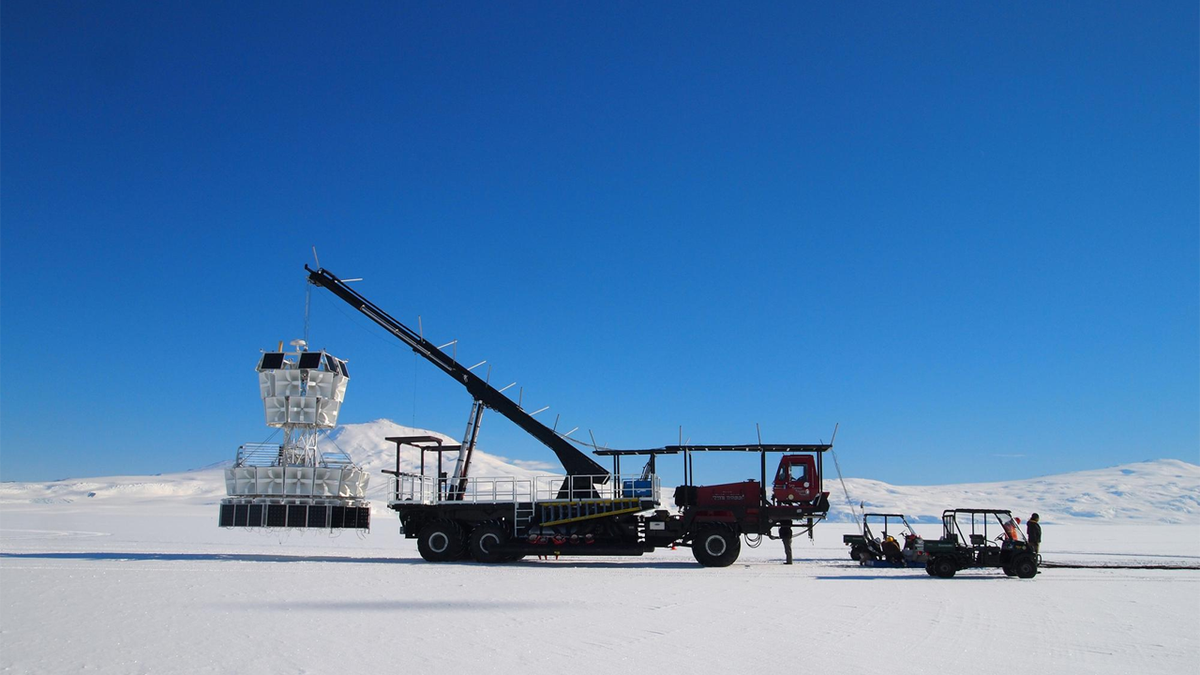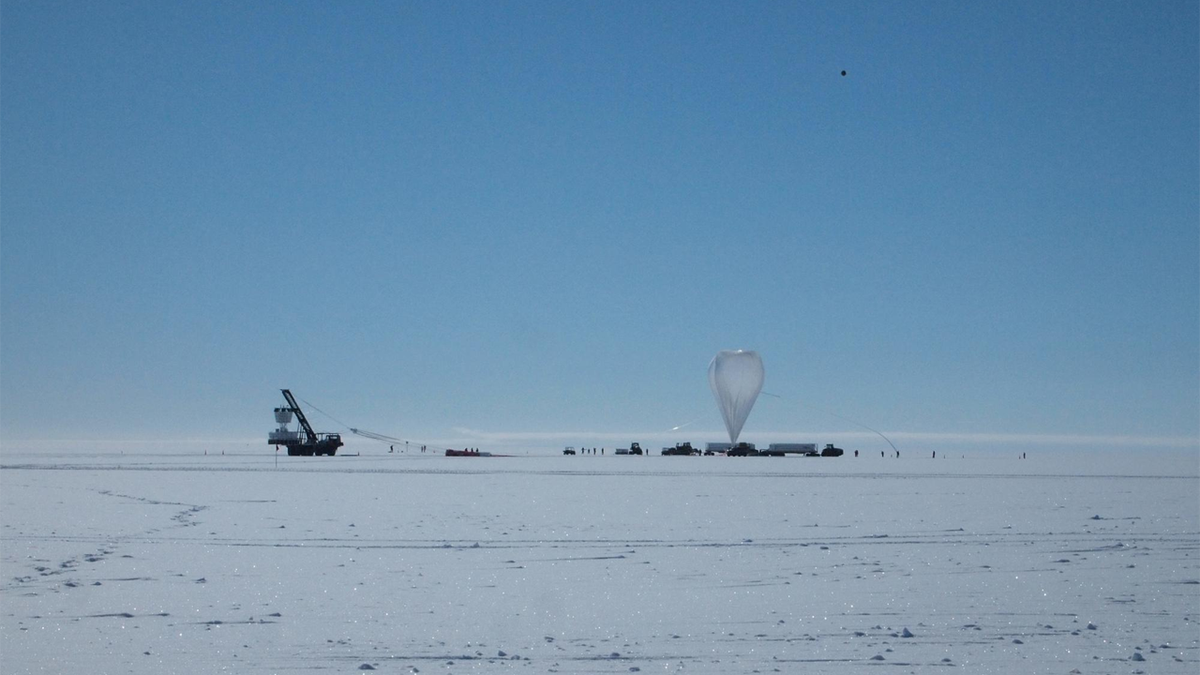NEWYou can now listen to Fox News articles!
A group of researchers in Antarctica have found strange radio waves coming from below the ice.
According to the results published in the Physical Review Letters, the mysterious radio waves were discovered by the Antarctic Impulsive Transient Antenna (ANITA).
During this experiment, the researchers analyzed signals traveling to Earth using a variety of instruments.
Using balloons to send the instruments up high into the atmosphere, the goal was to gain new understandings of cosmic events throughout the universe.
POTENTIAL DISCOVERY OF NEW DWARF PLANET ADDS WRINKLE TO PLANET NINE THEORY
The unusual radio pulses were detected by the Antarctic Impulsive Transient Antenna (ANITA) experiment, a range of instruments flown on balloons high above Antarctica that are designed to detect radio waves from cosmic rays hitting the atmosphere. Credit: Stephanie Wissel / Penn State (Photo: Stephanie Wissel/ Penn State)
According to the release, the reason Antarctica was the site of these experiments was due to little to no interference from other radio waves.
However, the researchers found radio waves transmitting from under the ice instead.
Stephanie Wissel, associate professor of physics, astronomy and astrophysics from Penn State, and one of the researchers discussed in a release by the college, revealed they discovered the radio waves while searching for a particle known as neutrinos.

Stephanie Wissel and teams of researchers around the world have been working to design and build special detectors to capture sensitive neutrino signals, even in relatively small amounts. Even one small signal from a neutrino holds a treasure trove of information, so all data has significance, she said. (Photo: Stephanie Wissel / Penn State.)
“The radio waves that we detected were at really steep angles, like 30 degrees below the surface of the ice,” Wissel said in the release.
Wissel went on to explain that the radio waves should have been undetectable.
The waves would have had to go through thousands of kilometers of rock and would have been absorbed into the rocks.
She also said in the release that the team of researchers had no answer about how these neutrinos were detected.

ANITA was placed in Antarctica because there is little chance of interference from other signals. To capture the emission signals, the balloon-borne radio detector is sent to fly over stretches of ice, capturing what are called ice showers. Credit: Stephanie Wissel / Penn State.
According to Wissel, neutrinos are important to the understanding of the universe due to emitted by high-energy sources and are typically hard to detect.
Wissel said that you could have a billion neutrinos passing through you at any moment but they don’t interact with you.
“So, this is the double-edged sword problem. If we detect them, it means they have traveled all this way without interacting with anything else. We could be detecting a neutrino coming from the edge of the observable universe,” Wissel said.
Once discovered, these particles can reveal data and information about cosmic events that even the most powerful telescopes can not.
CLICK HERE TO GET THE FOX NEWS APP
According to Wissel, the balloon is sent up 40 kilometers or 29 miles above the ice to catch emissions signals.
However, the researchers cross-referenced their findings with two other experiments and found that their results did not match up.
This means that what they found were not neutrinos but something else entirely.
Wissel said that there have been some theories that this could be dark matter, but it can’t be confirmed and remains a mystery.
“My guess is that some interesting radio propagation effects occur near ice and also near the horizon that I don’t fully understand, but we certainly explored several of those, and we haven’t been able to find any of those yet either,” Wissel said.
Nick Butler is a reporter for Fox News Digital. Do you have any tips? Reach out to Nick.Butler@Fox.com.




